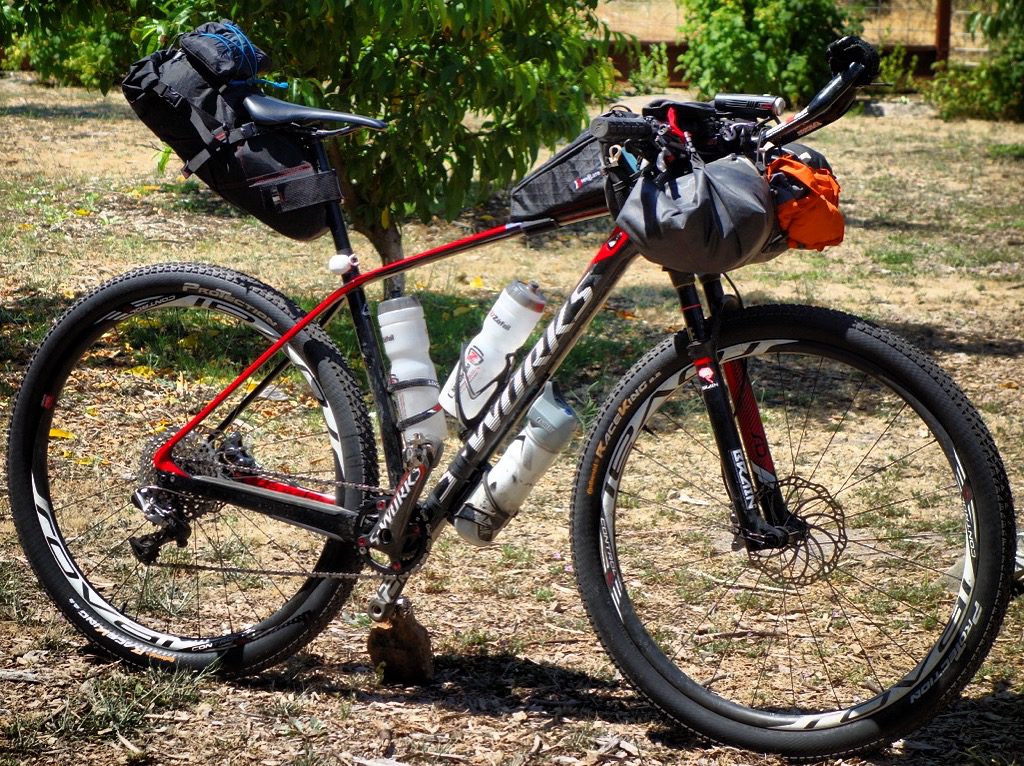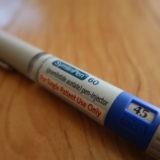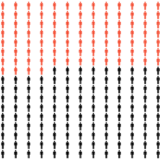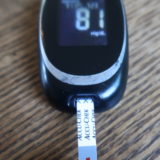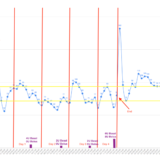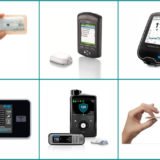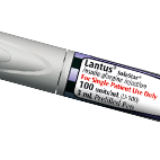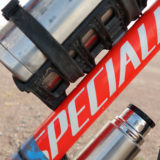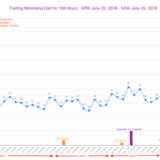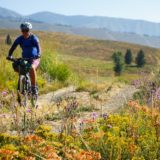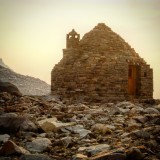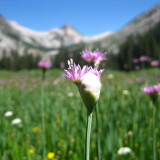I get a lot of questions about the gear I use, so I have created two packing lists:
Tour Divide Gear List
Fast Packing Setup
Tour Divide Gear List
Here is my bike packed up for the Tour Divide:
Here are the pictures of my gear laid out. I took these pictures a couple weeks before departure, so some of the pictured gear is different than what I actually brought. Changes are: iPhone was in a waterproof case, not one pictured. Did not bring the Z-lite ground pad (instead used NeoAir Xlite). Did not bring the Dexcom stuff. Brought a spare Lantus pen. Did not bring Sawyer Water Filter – relied exclusively on Camelbak All Clear. Booties pictured got trashed in the mud on the first day, and thus were thrown away. Ended up not brining the Outdoor Research Overmits. Everything else was as pictured.
- From this picture, I ended up throwing away the booties after the 1st day. Also, I did not end up bringing the Outdoor Research Over Mitts.
- From this picture, I did NOT bring the Sawyer Filter.
- From this picture, I did not bring the Dexcom Stuff. I brought a spare Lantus pen as well.
- From this picture, I used a different iPhone case – a cheap waterproof iPhone case from China. It the case worked very well, but the plastic screen eventually got scratched a few months later.
- From this picture – I eventually changed from the Z-lite pad to the Neo Air xLite
Fast Packing Setup
| Item | Rating | Price | Weight |
|---|---|---|---|
| 4.75 | $160.00 | 19 oz | |
| 5 | $499.95 | 26 oz | |
| 5 | $127.96 | 12 oz | |
| 4.5 | $379.95 | 33 oz | |
| Total Base Pack / Sleeping | n/a | $1,167.86 | 79 oz |
| Item | Rating | Price | Weight |
|---|---|---|---|
| n/a | n/a | n/a | |
| 4 | $34.99 | 4.4 oz | |
| n/a | $1 | 1 oz | |
| n/a | n/a | 24 oz per day | |
| Total Cooking, Food and Water | n/a | $35.99 | 5.4 oz (base) + 27.4 oz with water + 1oz per hour for food |
| Item | Rating | Price | Weight |
|---|---|---|---|
Working from the top down, a wide brim hat is going to give you extra endurance in the sun. The wide sides and generous back of this hat will protect you when the sun is low. Also, the chin strap keeps the hat with you in high wind situations. Half of the people I see on the trail are wearing this hat. One problem I experienced is that the fabric at the top ripped after a couple years. I’ll be buying a new one. It seems I’m not alone, as a hiker I met on the trail had the same issue. |
4.5 | $27.26 | 3 oz |
I found that a lightweight down jacket is a necessary supplement to the Phantom 32 sleeping bag. The key here is the hood. The hood makes a continuous area between your body and head. In terms of weight and warmth, it’s much more efficient to have a down hood as opposed to a separate fleece beanie. This jacket performs and fits very well. It has a drawstring at the waist as well as pockets. It’s definitely not as warm as their sub-zero and phantom jackets, which I also own, but for a speed attempt, this jacket is going to be key because it is significantly lighter. |
4.5 | $349.00 | 8 oz |
Your choice of shorts is going to be personal, but here is what I have to offer: Running shorts seem to be superior to baggie shorts in the summer months. If you’re moving quickly above 10,000′, you’re just not going to need pants. There aren’t ticks, and there usually isn’t too much bush-whacking above that elevation. Longer shorts just hinder your movement, add weight, and make you sweat. When it is cold, and you’re stopped, you’re probably going to be in your sleeping bag anyway. I wore 1 pair, and carried another. I was a good idea to have a second pair (in case bad weather came along). In reality, with frequent swims and dry air, it was not necessary to have a second pair because the swimming kept them clean. They served as pillow stuffing for most of the trip. |
4.5 | $30.00 (ea) | 16 oz (two pairs) |
Your choice of shirts are also going to be personal, but here is what I have to offer: Quick drying, fabrics such as the one linked to the left are optimal. They are lighter weight as well. Dark colors are recommended, as they do not show the dirt. I carried an extra shirt, but like the shorts, didn’t really need it with frequent washing. If bad weather had come, an extra (dry) shirt would have been welcome. |
4.5 | $18.91 (ea) | 10.6 oz (two) |
Some people will choose gaiters for an off trail trip. I skip them for less weight and hassle. I find that I’m taking off my shoes periodically anyway for swimming, so why not remove the rocks at that point as well? Smartwool socks are thin enough that they dry quickly, don’t retain water when wet. The higher ankle (than some running socks) keeps the rocks from between your sock and foot – directing most of the scree into the area between your sock and shoe instead. I carried 2 extra pairs (for a total of 3 pairs). This may have been excessive, but I tried to rotate and wash them. Foot care is essential at all times on any backpacking or fast packing trip. Feet should be first in line for your care regimen. |
4.5 | $15.21 (ea) | 4.2 oz (three pair) |
There are many options for a waterproof shell. I carry the North Face Leonidas because that is what I own – but it is not the lightest jacket. In practice, I did not use this jacket on the Sierra High Route (only as part of a pillow). Nevertheless, this jacket is very comfortable in rainy weather. The hood is key – but not absolutely necessary for a rain shell. If you’re wearing the hat mentioned above, you’d be protected enough in moderate rain to forgo the hood, allowing you a lighter weight option for your shell. Although I had a perfect weather forecast, it would be foolish to venture out without a reliable rain shell and/or tent. |
4.5 | $199.00 | 16 oz |
Arm coolers are not essential gear, but they will save you a little weight on sunscreen. Also, if you get them wet, they definitely help keep your core cool. They vaguely serve as arm warmers as well, taking just a bit of the chill off in the early morning hours. Finally, they serve as a wicking barrier between your arms and the rain shell if you have to use it. You know that clammy feeling of damp skin against a wet-out nylon shell? These mitigate that cold feeling quite well. I have not personally tested the product linked to the left; I use Specialized brand arm coolers – chosen for their long lasting elastic, and grippy band near the upper arm that keeps the cooler from slipping down. After a few years use, the elastic and grippy portion does finally wear out. White is a great color for the sun, but less than ideal for the keeping things looking good. I’ve found that very thin black-colored arm coolers are functional as well – especially if you wet them. |
4.5 | $10.25 | 1 oz |
| Total Clothing | n/a | $728.96 | 59 oz |
| Item | Rating | Price | Weight |
|---|---|---|---|
You may not need this if you’re going on a shorter trip, or if you do not have the need to keep electronics alive. I used this pack with great success to keep my iPhone and Garmin Epix charged for the entirety of 6 1/2 days. I’ve used this pack extensively on several month long bike tours, so I can vouch for it’s reliability and capacity. You have many options available in this ever improving market. My advice is to seriously consider the battery pack over solar for trips under 6 days – especially fast ones. On a fast trip, you’re not going to have time to orient a solar panel on your pack, and the small charge that you obtain may not be enough to keep your devices going. Finally, having a solar panel outside your pack is another item to get caught on brush and torn off. For longer trips, solar may be your only option. |
5 | $39.99 | 8.8 oz |
This lamp is fantastic. You can program it using your computer for extra light or extra life. I set the light in reactive mode, and set it to use the minimum amount of energy. After a 10 day trip, using the light a few hours per day (both before dawn and after sunrise), the battery still had over 50% life left. The lamp produced enough light for me to navigate over difficult terrain. This light just works. It loses half a point because the computer software is not as intuitive as I would like. |
4.5 | $79.95 | 4 oz |
The Personal Locator Beacon is an optional piece of gear. You basically have 4 options for locator beacons: SPOT, DeLorme, ACR, and FastFind. I believe that the DeLorme is going to become the most popular device in the near term – specifically because it has two way messaging capabilities. The device you choose will depend on your philosophy of how life should be in the wilderness, and your need for constant feedback. The ACR device (my personal recommendation) and FastFind fall into the category of locator beacons. This means that they send a homing signal, as well as a 5 Watt signal to two government owned satellites. By comparison, SPOT only uses 0.4 Watts to transmit it’s signal. If your goal is strictly to be rescued in an emergency, your best chance is going to be with the ACR ResQLink device I have linked here. Another good choice would be the FastFind device. If you want to send pre-made messages, consider a SPOT. However, I’ve been on trips with my friend Leor, and some of his SPOT communications have not gone through (we didn’t find out until afterward). I would not rely on this as a locator beacon – more as a fun toy. I have similar thoughts about the DeLorme (it uses the Irridium network instead of Globalstar). One advantage to the DeLorme, however, is that you can receive feedback: you will know if your message went through or not. That is comforting in an emergency – if it works. DeLorme is also transmitting at 0.4 Watts. I have not given a rating because I cannot vouch for the performance of the product; I’ve only done one test, which worked – but it only tests the battery and GPS; it does not test the satellite uplink. |
n/a | $259.99 | 5 oz |
 The Garmin Epix is optional equipment for sure. I purchased it in the hopes that it would make me faster by being able to glance at my wrist for position instead of having to dig my iPhone out of my pocket for location updates. I also like to keep a track record of where I’ve been. The promised 20 hour battery life (from a 300mAH battery that wouldn’t drain my recharge pack much) was very appealing. Also, the idea of en-route uploads via Bluetooth sync were appealing. The problem is that none of the promised features really worked as of software 2.70. The battery only lasts about 7 hours in GPS tracking mode with the map showing (and every other battery consuming feature turned off). Also, the map can be laggy at times. Finally, bluetooth syncing is slow to the point of being completely useless. It takes about 30 minute to sync a single all day activity. The only reasons I’m including it here is because 1) I do use it on my fastpack trips. 2) I am hopeful that Garmin will get the MANY bugs worked out in the future. ***Update March 2017: Garmin released a few updates on the Garmin Epix since I originally posted this. Not everything is fixed, but I have upped my rating considerably (previously it was 2.5). I’ve upped the rating because thanks to firmware changes, the battery now does last about 20 hours. Not quite the 24 hours they promise, but definitely reasonable! Furthermore, they fixed some nagging bugs like the screen lock feature. There are still a couple small bugs: For example, the barometer feature doesn’t display the correct reading. This means that the storm alerts don’t work correctly. Another bug is that if you select continuous calibration, the displayed elevation will creep up very slowly until it says you’re about 100′ above your true elevation. The solution is simple: select “calibration-once” in the settings. The big boon for me in the Epix is the fact that I can recharge it while I’m running & the fact that it has a touch screen. The recently released Fenix 5X has neither of these features. Furthermore, the price of the Epix has dropped to $379 on Amazon, making it a much better deal than the Fenix at this point. I don’t believe that the Fenix brings on any additional features, and from the forums, it appears that the two bugs I mention here are also present in the Fenix line. |
4.0 | $379.99 | 3 oz |
 The iPhone is optional equipment, however it serves a number of useful functions with a small weight penalty. The iPhone can record where you’ve been, show your location on a map for free (Galielo App), take great pictures, make a phone call in some locations in case of an emergency, and serve as a note-pad for taking journal entries for the day. As of iOS 8.4, you can run the GPS – even in Airplane Mode. I’ve been using activity tracking apps that lay down a track point every few seconds. With minimal camera use and full time tracking, I’ve been getting 18 hours battery life from its 1,440 mAH battery! With the phone in airplane mode, and no tracking (just using the phone for camera use) the phone will easily last the duration of a 6 day trip. |
5 | $374.99 | 5 oz (with case) |
| Total Electronics This total also includes the weight from items not mentioned above: iPhone Charging wire (0.6 oz), Epix Charging Wire (1.1oz) | n/a | $1304.91 | 27.5 oz |
| Item | Rating | Price | Weight |
|---|---|---|---|
| Base Pack | n/a | $1,167.86 | 79 oz |
| Cooking, Food and Water | n/a | $35.99 | 5.4 oz (add 1.5lbs food per day) |
| Clothing | n/a | $728.96 | 59 oz |
| Electronics | n/a | $1304.91 | 27.5 oz |
| Toiletries | n/a | $56.16 | 5.5 oz |
| Total: This includes the weight of everything I carried in my pack, except water and food. Food will be approximately 1.5 pounds per day ( a little less for shorter trips because you can eat more at the beginning and end of the trip). I started with an 11 pound pack (all the gear). For 140 hours, I carried 10 pounds of food, and was usually carrying about 1 pound of water at any given moment. This is an inclusive total of 22 pounds at the start of the trip. By the end, total weight was probably in the 12 pound range. | n/a | $3293.88 | 176.4 oz (11 lbs) |
** Disclosures: Please note that As an Amazon Associate I earn from qualifying purchases. If you click on one of my affiliate links, I may earn a commission.
